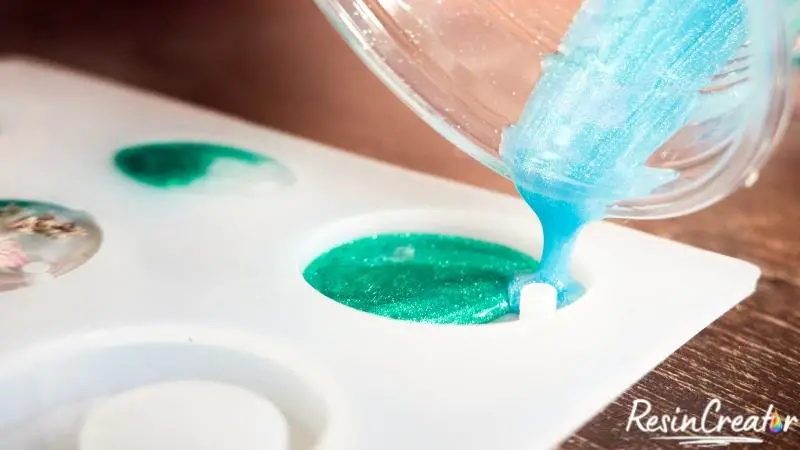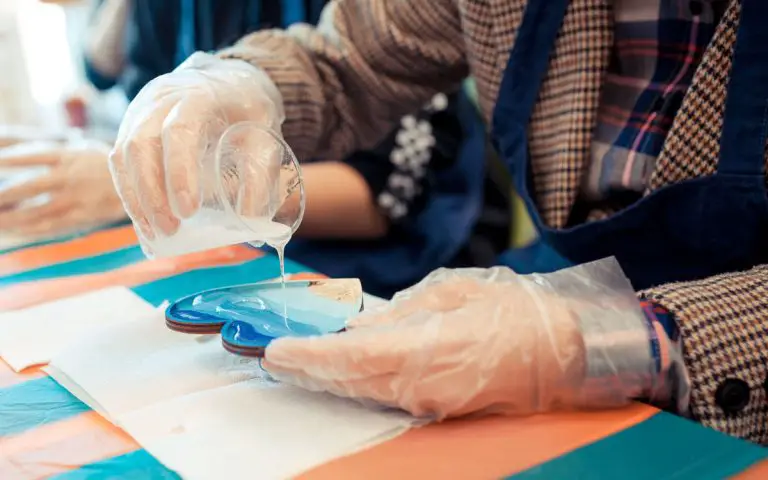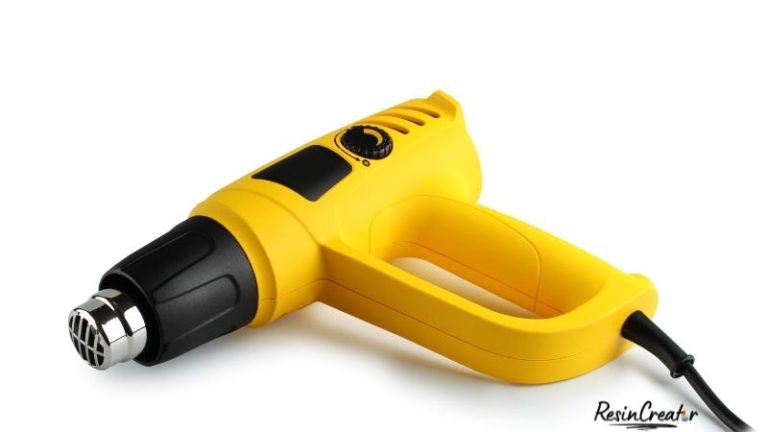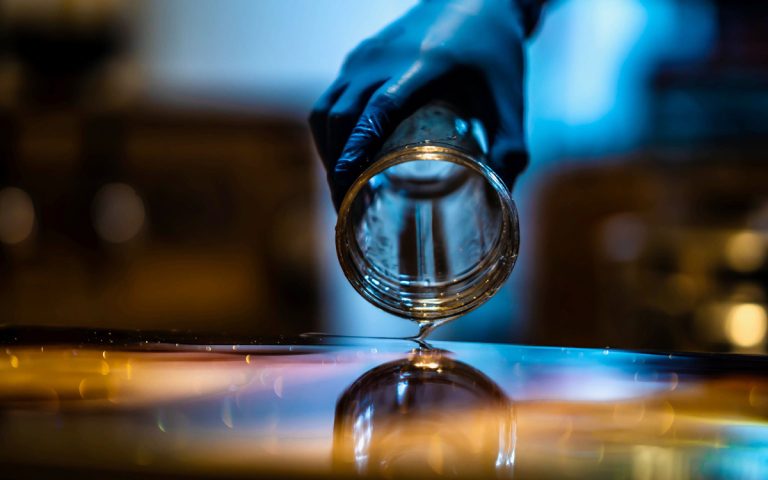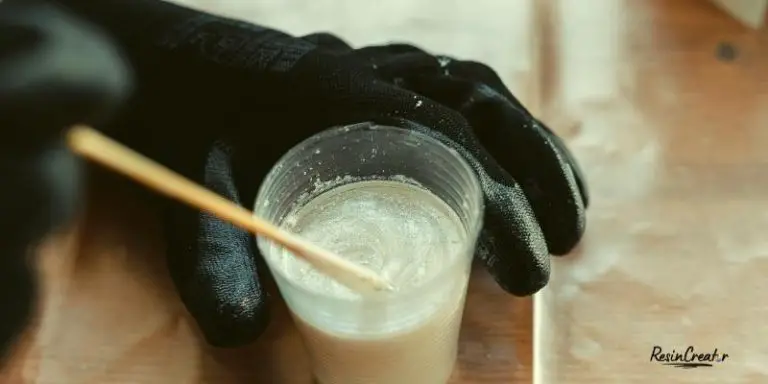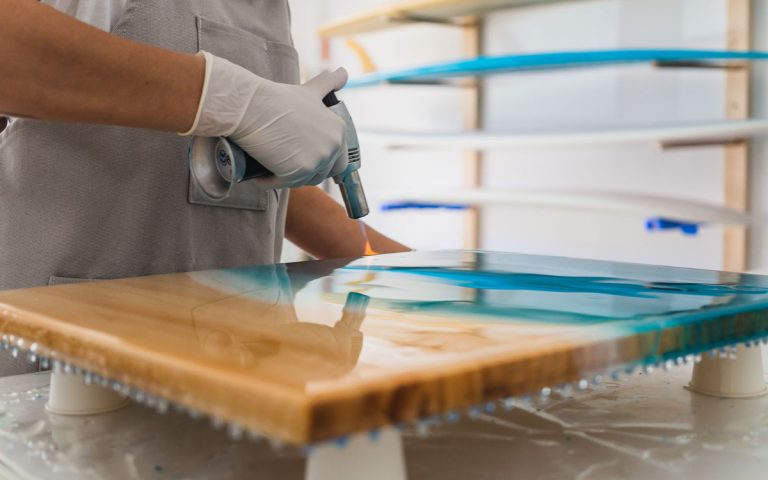How to Clean Resin Molds: A Comprehensive Guide
Resin art is bold and fun, as it is an incredible way for people to express themselves. One of the ways that artists bring their art to life is by using resin molds. As a resin art enthusiast, you may be wondering how to clean resin molds effectively.
One of the most important things to consider when cleaning your molds is using the right cleaning agent. For example, acetone is useful when cleaning polyester resin, and rubbing alcohol can help clean epoxy resin.
How to Clean Resin Molds
Figuring out how to clean resin molds is one of a new artists’ most common challenges. Luckily, there are effective ways for you to clean resin molds. Let’s take a look at each method!
Place Molds in the Freezer
Molds are easier to clean when the resin hardens. All you need to do is place the mold in a freezer, and after a few hours, you can easily peel off the resin.
However, you must cover these molds in separate bags to keep your food and other eatables safe. After cleaning off the larger resin chunks, you’ll need to clean out the smaller particles with sticky tape.
Use Wet Wipes
Wet wipes are one of the most effective ways that anyone can clean their resin molds. Regular wet wipes will ensure that you get rid of the resin in your silicone molds.
The wet wipes are easy to use; all you need to do is use the wet wipes on the resin mold until it’s clean. It’s essential to clean it thoroughly, including the corners, to ensure you don’t have any trouble the next time you use your mold.
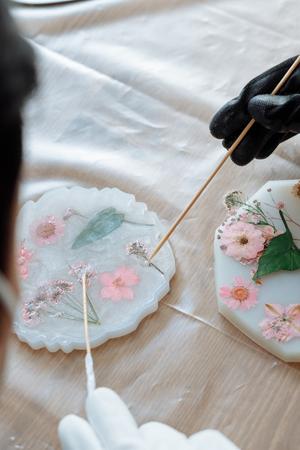
Use Acetone
Acetone comes with its fair share of advantages and disadvantages. However, with the help of acetone, you can clean your molds efficiently and effectively.
But the major problem is that it is not as readily available as other cleaning products. In addition, acetone is also a toxic chemical, so you must take various protective measures before using it.
To use acetone, you will need to wear a pair of protective gloves so you can soak your cloth without your skin coming into contact with it. The solvent will quickly break down the resin residue allowing you to clean your mold effectively.
Warm and Soapy Water
Washing your mold with a sponge and soap-induced water will help you remove the resin from your mold. To effectively remove resin from your mold, you’ll need a toothbrush, sponge, and steel wool.
After you have washed your mold with a sponge and soap, you’ll need to dry it thoroughly. You can use paper towels to do so and then store your mold in a cool and dry area.
This will help keep your molds clean and keep them from getting any scratches and dust.
With the help of these tips, you will easily clean out any sticky or old resin that has accumulated on the mold.
How to Clean Silicone Molds

There are many easy ways to clean your silicone molds. However, one of the most effective and popular ways to clean them is a light scrub, sponge, and a bit of dishwashing liquid.
Many people use a degreaser to clean silicone molds, while others use boiling water with detergent. Since silicone is plastic, you can also use plain water to clean it.
It is essential to rinse off and dry these molds after washing them to ensure optimum results.
Another effective way to clean off silicone is vinegar and water solution. Moreover, users can also use the help of a dishwashing liquid.
It is essential to avoid using harmful chemicals that can damage the surface of your molds. Always make sure to use natural and eco-friendly products when cleaning your molds.
What Can I Use To Clean Resin Molds?
Here is a list of things you can use to clean your resin mold:
- Hot Water and soap
- Baby wipes
- Scrub or a soft brush
- Detergents
- Vacuum cleaner
- Paper towels
- Alcohol
- Acetone
- UV light
- Hairdryer
These are popular choices for artists who want to clean their resin mold effectively. These items will complement one another to give you the most straightforward cleaning experience.
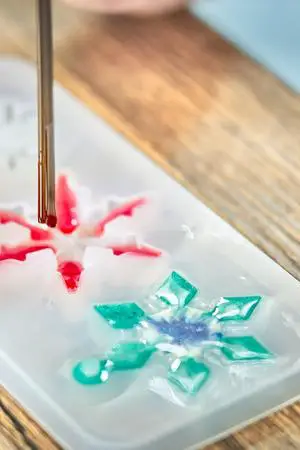
What Is the Easiest Way to Remove Resin from Mold?
You need to know how to clean resin molds. With countless options available, let’s look at the easiest solution to cleaning resin from your mold. The easiest and the most effective solution would be acetone or an alcohol solution.
These chemicals can quickly remove the resin on your mold and are generally easy to use. However, you must take various safety precautions before using these chemical solutions.
Steps to Remove Uncured Resin from Silicone Molds
Here are a few steps that you can take to get rid of the uncured resin:
- Pour the Uncured Resin Out
If the resin is still in a liquid form, you need to pour it out of the mold and into a plastic container. But if it isn’t in a liquid form, you can use utensils, like a spoon to scoop the cured resin out.
Make sure you dispose of the resin correctly.
- Take New Resin and Add to Mold
The second step is to ensure that you add the new resin layer into the mold. Ensure you measure the resin and hardener precisely to avoid getting a tacky or liquidy mixture.
- Demold
Once the new resin has mixed with the older one, you will need to peel it off the silicone. If there is plenty of uncured resin left, keep repeating these steps.
Common Silicone Mold Mistakes to Avoid
Here are a few common mistakes that artists make with their silicone molds:
Not Storing the Mold in a Single Layer
Keeping the mold in a single layer is essential since piling layers can cause your mold to bend and buckle, making it impossible to restore it to its original position. So make sure to have only one layer of resin on your mold at a time.
Leaving Silicone Molds in the Sun and Heat
Keeping the mold in a cool, dry place and away from the sun is essential. Continuous exposure to sun and UV light will make the silicone crumble and stick to the resin.
Not Planning for Long-Term Storage
Sometimes, after inadequate care and precautions, you will notice that your molds don’t stay in shape. One of the ways you can avoid this is by placing a casting on it to keep it in shape.
Making Holes in Your Mold
Your molds can often stretch and go out of shape. Making holes in the mold is not viable since resin can quickly run through it.
You must avoid making holes in your mold to prevent this.
Not Washing Your Molds
Most molds get ruined because they don’t get washed after use. Therefore, you must clean it (with water and mild soap) to save it.
After washing it, you must ensure that it is completely dry before storing it in a cool and dry place.
Too Much Heat
Many resin craft artists use heat guns to speed up their curing process. Therefore, you will need a compact heat gun instead of using flames or a lighter to apply the heat.
Do you have more questions on how to clean resin molds? Then, read our FAQ section below!
Frequently Asked Questions (FAQ)
Can I wash resin down the sink?
No, you can’t wash resin down the sink. You need to be careful not to clog the drain. It is important to strain the resin before you dispose of it under the sink to avoid clogging.
Can I reuse my resin mold?
In many cases, resin molds are reusable, depending on the type of material. In addition, you need to be careful that the resin is compatible with the mold material you are using.
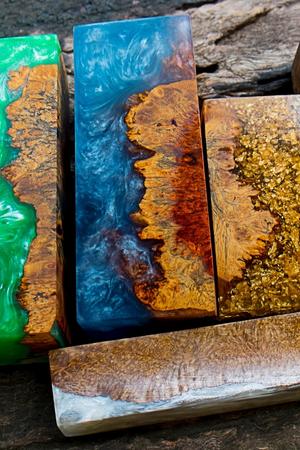
How can I tell when my resin is cured?
There are many ways to tell if your resin has cured or not. One common way is with the help of UV light to check for a change in their color.
Moreover, you can also use a thermometer to check what temperature your resin is curing in because temperature affects your curing process.
Do I have to use UV light to cure resin?
UV light is not necessary since there are numerous other options available. For example, artists can use a hairdryer or a heat gun to cure their resin.
Why is my resin mold sticky?
There can be a few reasons why your mold is sticky. However, the most common reason is that your mold was not washed or cleaned correctly after its last use.
There could also be a possibility that you may not have mixed your resin correctly. Furthermore, to avoid a sticky resin mold, your resin mixture must have the right hardener to resin ratio (1:1).
How do I remove dry resin from silicone molds?
One of the ways you can do this is with the help of a chemical called acetone. If it is not available, you can also use methyl ethyl ketone.
In addition, you can heat the silicone until it becomes soft and then scrape out the dry resin.
Can I use rubbing alcohol to clean my resin mold?
Rubbing alcohol may prove to be a suitable cleaning method. However, without adequate precautions, it can damage your mold. In such cases, the damage is often irreversible.
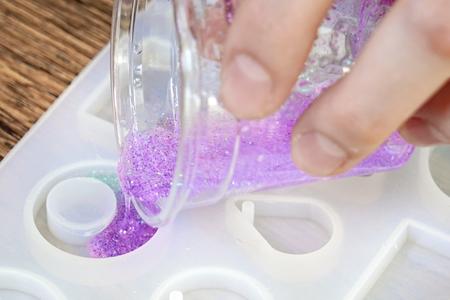
Final Thoughts
Resin molds require thorough care and adequate storage. Therefore, proper cleaning and maintenance are necessary to keep them in good shape. Adopting the best cleaning practices is vital in making the most out of your resin craft.
As we identified above, there are numerous ways to keep your resin mold clean. Maintaining your mold’s cleanliness will not only improve the quality of your project but will also ensure that you save money on replacements.
We hope you found this article helpful. Don’t forget to share it with a fellow resin art enthusiast!

